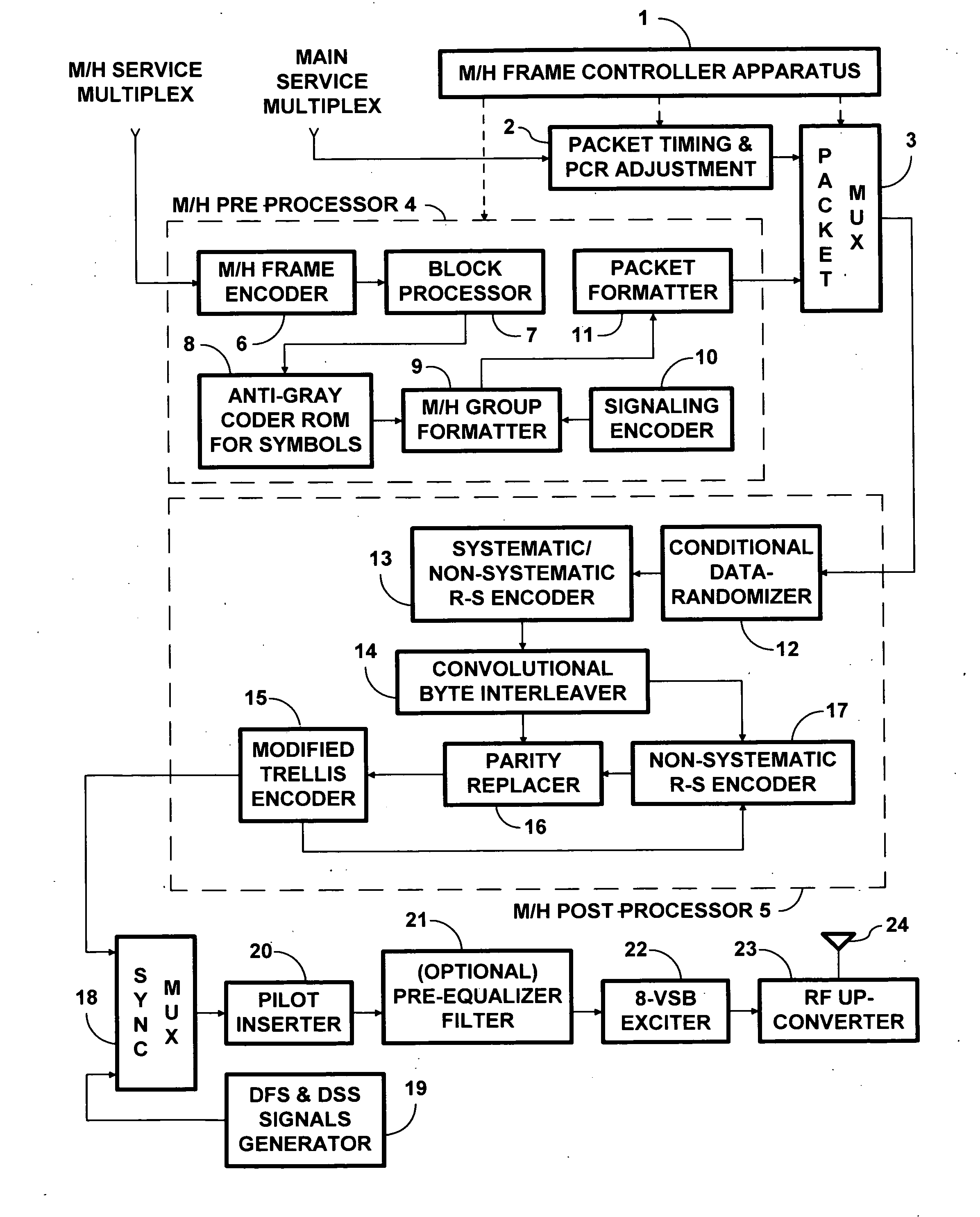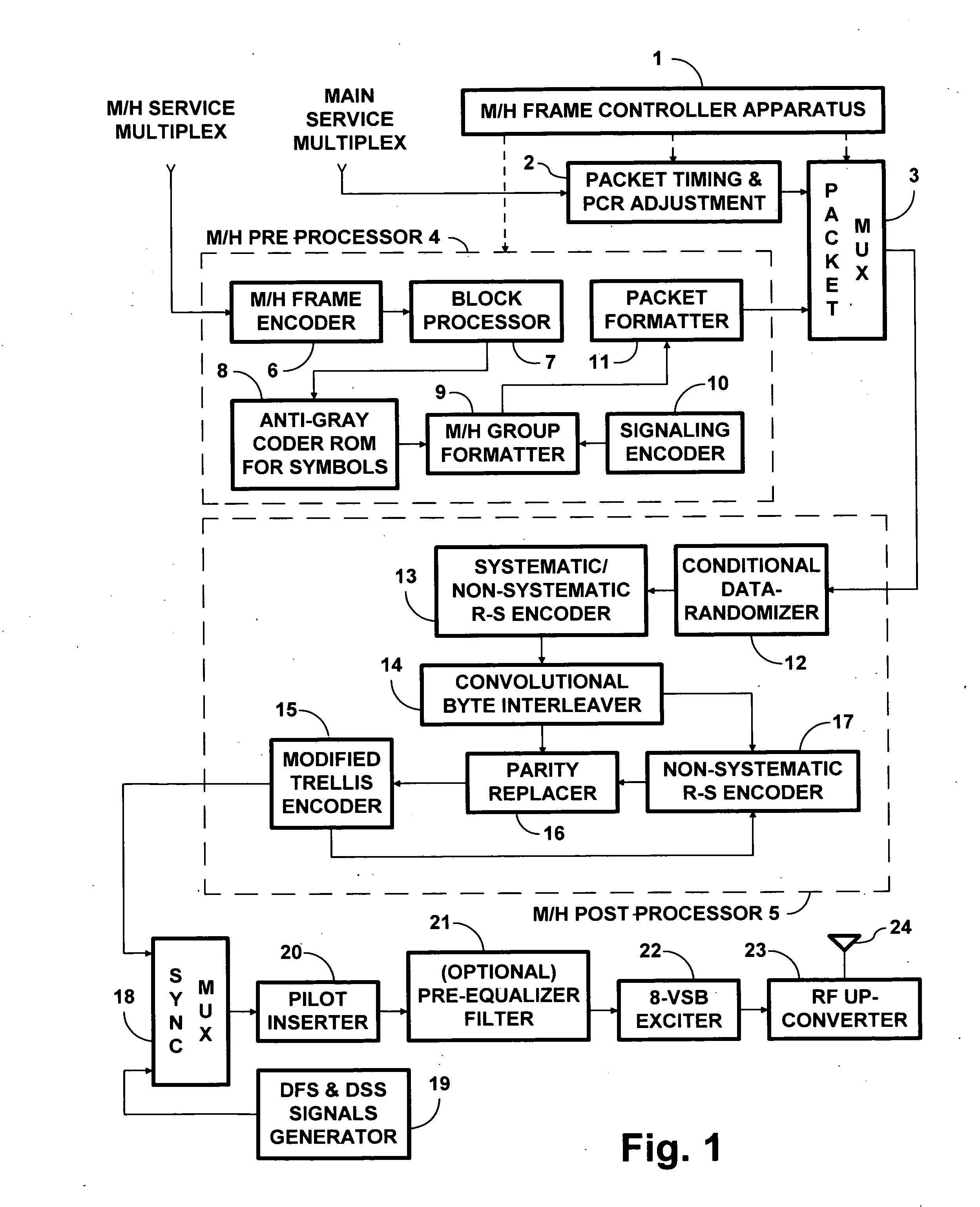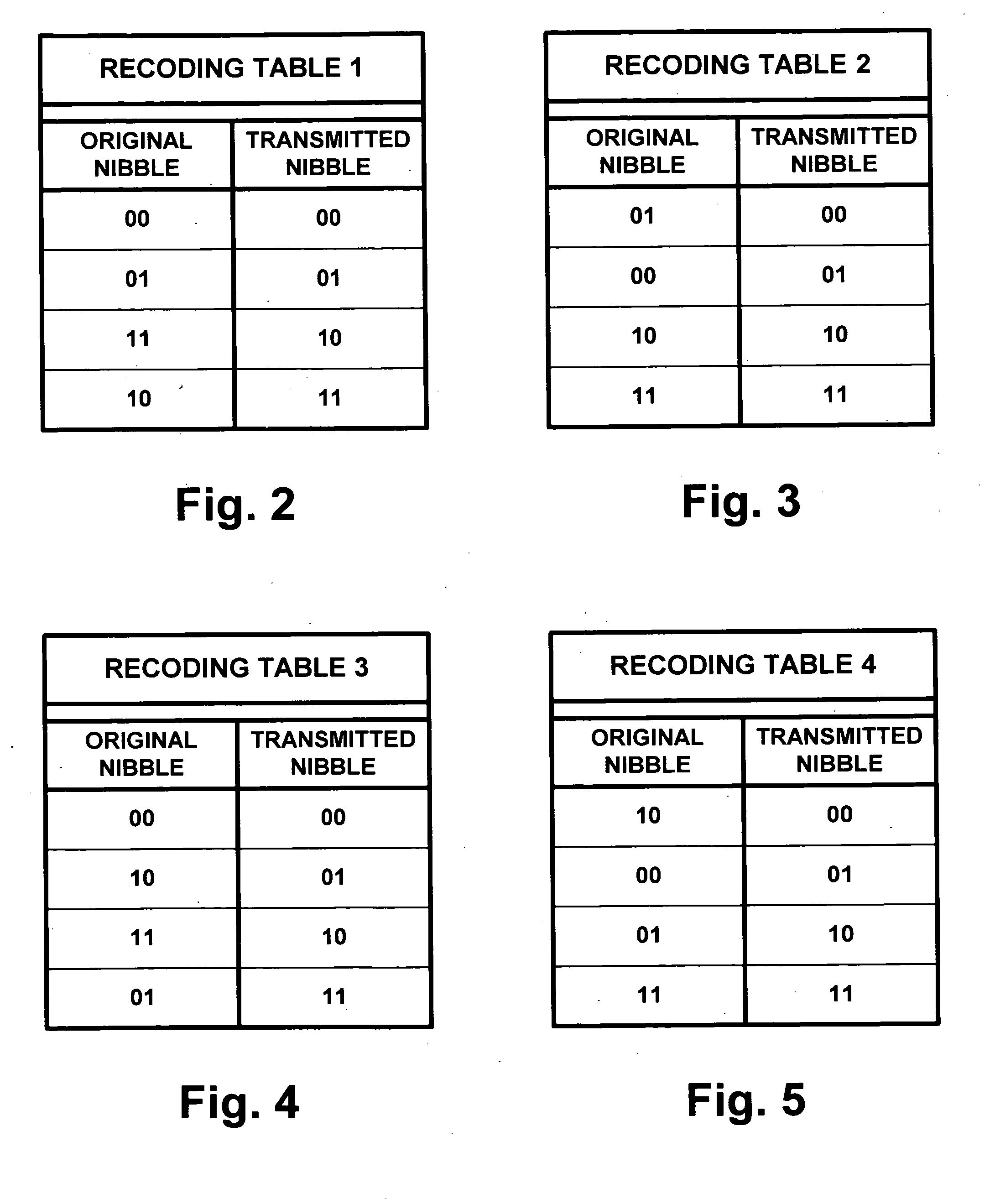System for digital television broadcasting using modified 2/3 trellis coding
a technology of digital television and coding, applied in the field of digital television broadcasting using modified 2/3 trellis coding, can solve the problems of incompatibility of symbol mapping using gray code over all eight modulation levels with the 23 trellis coding of ordinary 8vsb coding
- Summary
- Abstract
- Description
- Claims
- Application Information
AI Technical Summary
Benefits of technology
Problems solved by technology
Method used
Image
Examples
Embodiment Construction
[0032]A / 153 provides broadcasting services for mobile / hand-held (M / H) receivers using a portion of the 19.39 Mbps ATSC 8-VSB transmission, while the remainder is still available for high-definition or multiple standard-definition television services. The system is a dual-stream system: the ATSC service multiplex for existing digital television services and an M / H service multiplex for one or more mobile and hand-held services.
[0033]FIG. 1 shows transmitter apparatus for broadcast DTV signals using SCCC of the type prescribed by A / 153. The transmitter apparatus receives two sets of input streams: one consists of the MPEG transport stream (TS) packets of the main service data and the other consists of the M / H service data. Before being emitted from the transmitter, the M / H service data are encapsulated in special MPEG transport packets called M / H-encapsulating TS packets or MHE packets for short. This is done to avoid disruption of the reception of the main service data for legacy 8-V...
PUM
 Login to View More
Login to View More Abstract
Description
Claims
Application Information
 Login to View More
Login to View More - R&D
- Intellectual Property
- Life Sciences
- Materials
- Tech Scout
- Unparalleled Data Quality
- Higher Quality Content
- 60% Fewer Hallucinations
Browse by: Latest US Patents, China's latest patents, Technical Efficacy Thesaurus, Application Domain, Technology Topic, Popular Technical Reports.
© 2025 PatSnap. All rights reserved.Legal|Privacy policy|Modern Slavery Act Transparency Statement|Sitemap|About US| Contact US: help@patsnap.com



